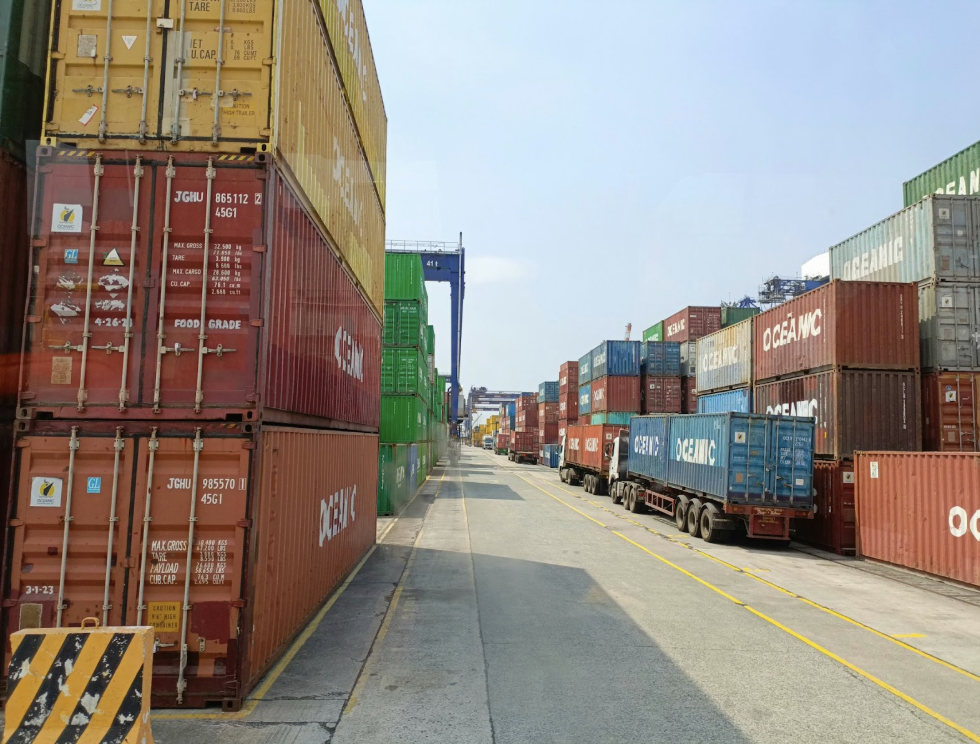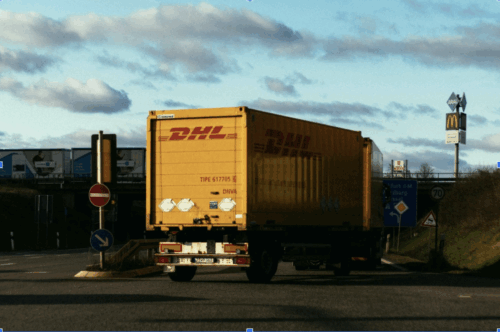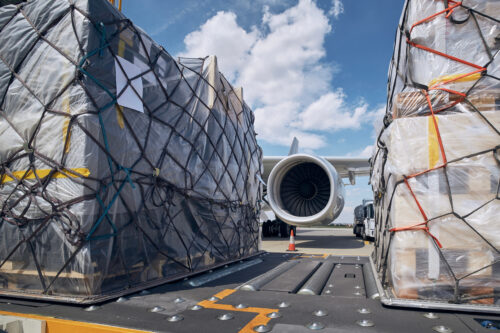Everything Businesses Need to Know About Freight Consolidation: Definition, Challenges, and Benefits

Paying more for half-empty trucks? That’s a clear signal something’s off in the shipping process. Many businesses waste money and resources without realizing that smarter logistics can change everything. Freight consolidation is the game-changer here.
It’s the practice of combining multiple small shipments from various shippers into one shipment—a more efficient and cost-effective approach to moving goods. This guide breaks down how freight consolidation works, why it’s essential, and the key benefits and risks.
What is Freight Consolidation?
Freight consolidation combines multiple shipments from various shippers into one shipment moving in the same direction. Businesses avoid sending half-empty trucks by forming a consolidated load that reduces shipping costs and improves delivery timing.
Using a consolidation strategy helps minimize transportation costs and streamline the supply chain. Whether managing LTL shipments or a full container load, understanding how LCL and FCL work leads to better planning and smarter use of available truck space.
LCL vs FCL
LCL cargo lets multiple shippers share space in a single container, cutting costs for smaller shipments. It’s ideal for limited cargo volume heading to the same destination.
FCL shipments involve an entire container used by one shipper, offering faster delivery, fewer stops, and more control—perfect for larger container shipments requiring secure, efficient handling.
The Importance of Freight Consolidation

Business logistics must evolve. Freight consolidation plays a critical role in how modern supply chains operate. Companies looking to cut shipping costs, meet due dates, and boost service levels rely on this method.
- Cost Efficiency: Consolidating multiple small shipments into one reduces freight consolidated runs and lowers total transportation costs.
- Enhanced Efficiency: Fewer touchpoints and smoother routes lead to shorter delivery times and less risk of damage or delay.
- Environmental Impact: Fewer trips mean lower carbon emissions, helping companies reduce their environmental footprint.
- Supply Chain Optimization: More reliable consolidated shipping builds consistency across the entire distribution chain and improves planning.
Benefits of Freight Consolidation
Companies that adopt freight consolidation gain operational strength, financial savings, and sustainability advantages. The benefits stretch across departments, from procurement to warehousing.
Boost Profitability
Reducing shipping costs through freight consolidation increases profit margins. Businesses pay for one consolidated load instead of many smaller shipments. Fewer trips save money, time, and resources—boosting efficiency across operations while creating room for long-term financial growth and stability.
Efficient Resource Utilization
Maximizing truck space through consolidation prevents waste. Sending multiple shipments wastes fuel, labor, and space. Filling an entire truck saves money and ensures better use of available resources across storage, transport, and staffing, strengthening operational performance and output per trip.
Economies of Scale
Pooling freight into one container load lowers the cost per unit shipped. Access to bulk rates becomes easier. Businesses spend less for more, creating scalable logistics that improve profitability while simplifying freight planning and reducing operational stress across departments.
Better Customer Relationships
Reliable freight delivered on time builds trust. Fewer delays mean happier customers. With consolidated shipping, businesses hit targets and reduce errors. Quick, accurate deliveries show clients their time matters, which encourages loyalty, repeat purchases, and stronger long-term customer connections.
Sustainable Supply Chain
Grouping freight cuts trips and emissions. With fewer trucks on the road, fuel use drops. Freight consolidation helps companies meet environmental goals while improving efficiency—an ideal blend of responsibility and performance within a more sustainable, cost-effective logistics model.
Reduce Chance of Damage
Fewer touchpoints mean safer freight. Consolidated shipments get handled less, reducing breakage. Combining loads minimizes risks and streamlines delivery. Businesses moving fragile or sensitive goods benefit from stronger protection and fewer claims related to loss or transit-related product damage.
Reduce Carbon Footprint
Reducing trips leads to lower carbon emissions. Fewer trucks burn less fuel. With freight consolidated, companies create greener supply chains without sacrificing speed or control. That aligns sustainability goals with smarter logistics for long-term cost and environmental performance.
Improve Flexibility & Time Management
Consolidation allows better planning. Businesses align production schedules with delivery. One consolidated load gives more flexibility than many partial shipments. Teams control timing better, simplify scheduling, and avoid last-minute changes.
Enhanced Security
Shipping fewer loads improves freight safety. Consolidated freight faces fewer transfers and lower theft risk. Controlled handling reduces exposure to damage or loss. Fewer stops increase trust and reduce issues, especially with high-value items needing secure, direct transport.
Better Visibility & Control
Managing one consolidated load gives clearer oversight. Teams track freight more easily and spot delays faster. With fewer variables, inventory remains visible throughout. That means better planning, tighter control, and fewer surprises during transport or final-mile delivery coordination.
Collaboration and Networking
Pooling shipments builds business relationships. Freight consolidation encourages cooperation with logistics partners and shippers. That unlocks savings, expands networks, and improves access to capacity.
Consolidated Shipping Options

Businesses using freight consolidation must choose the right mode of transport to match their timeline, budget, and cargo needs. Each method plays a role in controlling shipping costs and efficiency.
- Ground: Affordable for domestic consolidated shipments, with flexible routing and better utilization of truck space across full truckload operations from different shippers.
- Air: Fast but costly. Ideal for urgent consolidated shipping of high-value cargo, where speed matters more than shipping costs or fuel savings.
- Ocean: Perfect for cargo consolidation in international trade. Businesses use LCL for shared space or FCL for full container shipment efficiency.
Challenges of Freight Consolidation
Freight consolidation provides value, but it’s not without hurdles. Businesses must navigate logistical, legal, and operational challenges to keep things running smoothly.
Finding Carriers
Locating a carrier with space, reliability, and coverage can be tough, especially during peak seasons or on less common routes. Not every provider supports a consolidation service or has the network needed for efficient delivery.
Time vs Cost Juggling
Waiting for enough freight to fill a single truck or container can delay shipments. Businesses must balance cost savings with speed. Choosing consolidation means prioritizing budget or timeline, rarely both.
Coordination and Communication
Consolidating freight involves multiple shippers, vendors, and timelines. Poor communication leads to missed pickups, delays, or wrong loads. Keeping every party aligned is critical to avoid breakdowns in execution.
Sorting Liability
Sharing space with other shipments complicates insurance. If damage occurs, it’s harder to assign responsibility. Clear contracts and defined terms matter when goods get bundled with others in transit.
Organization and Planning
Planning consolidated freight takes more work. Logistics teams must schedule pickups, prepare cargo, and manage timing across all legs. Sloppy planning creates errors, misloads, or inefficiencies that impact overall delivery.
Tracking & Customs Troubles
Tracking a consolidated load isn’t always straightforward. Multiple SKUs and destinations create data complexity. International shipments also face customs delays if documents aren’t properly grouped or declared.
Legal and Regulatory Compliance
Shipping across regions means dealing with varied rules. Consolidated goods often span different product categories, making compliance harder. Businesses must know each country’s policies to avoid border holds or fines.
Freight Consolidation Stages
Successful freight consolidation follows a clear process. Each step must work in sync to ensure a smooth flow from pickup to final destination.
- Planning and Organization: Identify smaller loads, align schedules, analyze cargo volume, and plan routes to maximize space and improve shipping efficiency.
- Carrier Sourcing and Contracting: Find a trusted carrier, secure terms, and confirm flat rate or full truckload options based on delivery requirements.
- Cargo Collection: Shippers send goods to hubs or distribution centers through scheduled pickups aligned with route timing and shipment volume.
- Consolidation Center Processing: Group and pack cargo securely. Label each shipment for tracking and maximize the entire space in containers.
- Transportation: Move consolidated freight to hubs or customs. Use tracking to monitor delays and ensure smooth, on-time shipping.
- Deconsolidation and Delivery: Unload and sort goods. Deliver each shipment accurately to its final location, minimizing confusion and saving delivery time.
Conclusion
Freight consolidation helps businesses ship smarter by combining smaller loads into one efficient shipment. It cuts fuel use, lowers labor costs, and improves timing. Using the right consolidation service boosts efficiency across distribution centers and reduces waste.
Though it comes with planning challenges, the benefits outweigh the effort. Bundling freight into a full container shipment or full truckload maximizes space and minimizes trips.
